#geshy
Text
e

r




#clone high#clone high fanart#mr butlertron#topher bus#clone high confucius#candide sampson#clone high candide#wesley nestle#principal scudworth#clone high prez#prez#clone high geshy#dna dan#geshy
296 notes
·
View notes
Text

a geshy for the soul
#clone high#geshy#i chose to fully color him first so id know how i want to set the colors n lighting or whatever it is im doing that i want to call renderin
20 notes
·
View notes
Text

Geshy from Clone High! Cute design, but could've done without his violent tendencies towards animals and humans...
8 notes
·
View notes
Text
Geshy is the cutest thing ever and severely underrated.
5 notes
·
View notes
Text


Tetsuo II: Body Hammer 1992 - Parasite Dolls 2003
#Tetsuo II: Body Hammer#Shinya Tsukamoto#Parasite Dolls#Kazuto Nakazawa#Naoyuki Yoshinaga#Yasuhiro Geshi
2K notes
·
View notes
Text
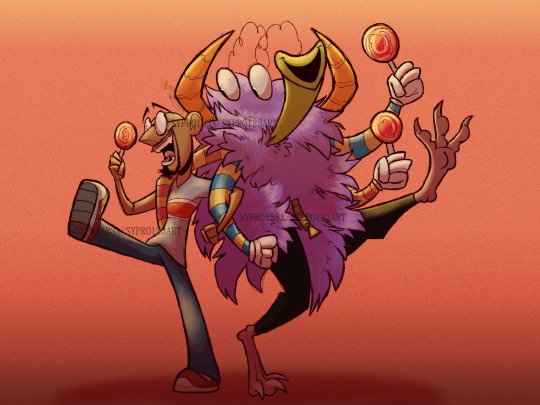
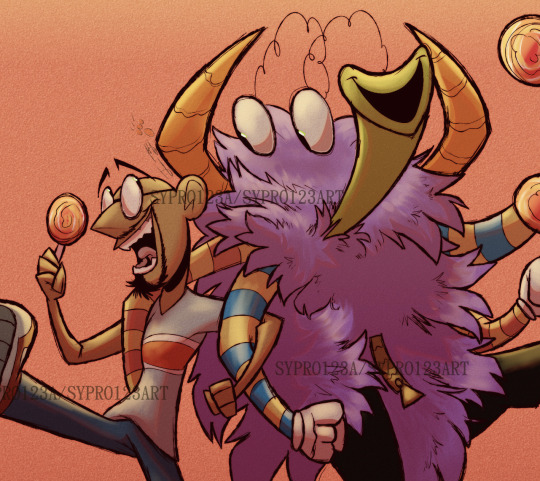
To begin my start on here: Repost of one of my CH drawins I made back in May. We got 2 goofs w 2 lollipops bein goofs.
anyways hi to the ch fandom side on here, pret new to tumblr so everythin is still confusin but I’ll survive 😎👍
28 notes
·
View notes
Text
save me bitchop geshy…../,,

im love him,,,,,,,,,,
#[🦴];; mossy’s art#leshy cotl#cult of the lamb leshy#bishop leshy#cotl leshy#cult of the lamb#cotl#cotl fanart#uhh#cotl headcanons#<- ig w the pins#screaming.#i love this man
18 notes
·
View notes
Text
i am being crazy serious when i say they should kiss. geshy is a violent animalistic creature but with a silly fun appearance and heebie is also a violent hell monster but actually looks the part. they are perfect. they sleep in a pile and purr


29 notes
·
View notes
Text

Edo period egoyomi (picture calendar) for Kyowa 2 (1802) picturing the monthly and seasonal needs for a small mountain village.
...
More Information on Japanese Calendars and Timekeeping
See the previous post here.
...
Japanese Years
Today, most of the world uses the Gregorian calendar, introduced in 1582, to track years of the common era. That calendar's era is based on years since the perceived birth of Jesus: 2023 CE (current era) or AD (anno domini, year of the lord) 2023.
Edo period Japan obviously did not use the Gregorian calendar as its own calendar-keeping was influenced by China, not the west. In fact, Japan did not adopt the Gregorian calendar until 1873 but continues to use era names into the present day.
Japan's system of era names (nengo) originates from China and was permanently adopted in 701 under Emperor Monmu. It has been continuously in use since.
Until the end of the Edo period, era names were decided by court officials and could change frequently. A new era name was usually proclaimed after the ascension of a new emperor, but could also be changed due to some auspicious event or even due to natural disasters.
Since the adoption of era names, most have been in use for fewer than 10 years, sometimes for as short a period as 2 years, and only a handful have been used for periods of more than 30 years.
This website is extremely helpful in converting Gregorian years into Japanese eras, just enter the year!
...
Japanese Months
During the Edo period, the Japanese year was broken down into 12 lunar months of either 29 days (small months) or 30 days (large months) each.
Additionally, a special intercalary month (uru-zuki) had to be added every few years to keep the calendar in sync with the actual change of seasons.
In the modern Japanese calendar, the months are numbered rather than named: ichi-gatsu (first month, January), ni-gatsu (second month, February), and so on, but during the Edo period, monthly names, which date back to the Heian era, were in common use.
(Today, you might still find these old monthly names in poetry.)
Here they are with their western calendar equivalent:
January - mutsuki 睦月
February - kisaragi 如月
March -yayoi 弥生
April - uzuki 卯月
May - satsuki 皐月
June - minazuki 水無月
July - fumizuki 文月
August - hazuki 葉月
September - nagatsuki 長月
October - kannazuki 神無月
November - shimotsuki 霜月
December - shiwasu 師走
...
Japanese Weeks
The western concept of breaking individual months down into 7-day weeks did not exist in Edo period Japan. However, there is a rough equivalent that corresponds to the general concept of weeks: nijushi-sekki, 24 seasonal divisions that break the year down into "weeks" of 15 days each.
They are:
Shokan (small chill) – around January 6
Daikan (big chill) – around January 20
Risshun (start of spring) – around February 4
Usui (rain water) – around February 18
Keichitsu (going-out of worms) – around March 6
Shunbun (spring equinox) – around March 21
Seimei (clear and bright) – 15 days after the spring equinox
Koku-u (rain for harvests) – around April 21
Rikka (start of summer) – around May 6
Shoman (half bloom) – around May 21
Boshu (seeds of cereals) – around June 5
Geshi (reaching summer) – summer solstice – around June 21
Shohsho (small heat) – around July 7
Taisho (big heat) – hottest time of the year – around July 23
Risshu (start of autumn) – around August 8
Shosho (keeping out of the heat) – around August 23
Hakuro (white dew) – around September 7
Shubun (the autumnal equinox) – around September 23
Kanro (cold dew) – around October 8
Soko (frosting) – around October 23
Ritto (start of winter) – around November 8
Shosetsu (small snow) – around November 23
Taisetsu (big snow) – around December 8
Toji (reaching winter) – around December 22
More in-depth information about these, along with explanations of why they're called what they're called, can be found here.
...
Japanese Days
Individual named days, such as Monday and Tuesday, as we know them on the western calendar, also did not exist in Edo period Japan.
You wouldn't say "We meet on Wednesday." Instead, you would have used the date, "We meet on the fifteenth day," or perhaps even the phase of the moon, "We meet on the new moon."
Individual Japanese days are also not broken down into 24 equal hours of 60 minutes each.
Instead, people in the Edo period split their days into 12 hours (toki): 6 daytime hours, which were counted from sunrise to sunset, and 6 night-time hours, which were counted from sunset to sunrise.
Naturally, the length of these hours varied not only by time of year (winter daytime hours being obviously shorter than winter nighttime hours) but also by geographical location.
Daytime hours were broken down as follows:
Hour of the Rabbit (begins at sunrise)
Hour of the Dragon
Hour of the Snake
Hour of the Horse (noon)
Hour of the Goat
Hour of the Monkey
Nighttime hours were broken down as follows:
Hour of the Rooster (begins at sunset)
Hour of the Dog
Hour of the Pig
Hour of the Rat (midnight)
Hour of the Ox
Hour of the Tiger
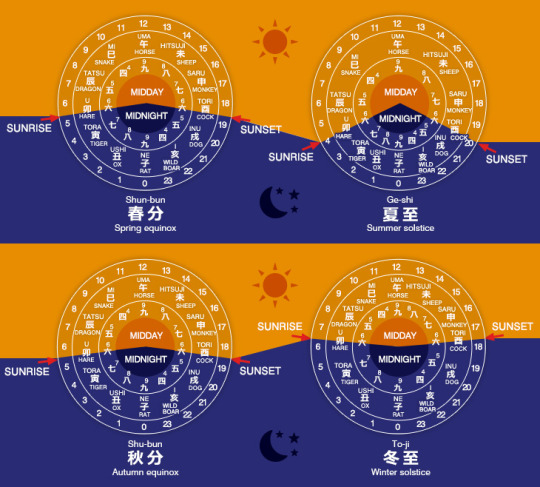
From the Seiko Museum.
#history notes#historical notes#history reference#historical reference#history research#historical research#Japanese calendar#calendars#Japanese era names#Japanese hours#are you confused yet?
16 notes
·
View notes
Text
€$₽!!!










First one is an art trade for @batosha
Second one is for @iskariottiuda
#clone high#clone high fanart#clone high season three#clone high confucius#art#topher bus#clone high abe lincoln#clone high abraham lincoln#clone high george washington carver#tophabe#clone high jesús christo#clone high jackie the ripper#clone high cleo#clone high geshy#clone high prez#inside out ennui
229 notes
·
View notes
Photo

白雪芥子[Shirayukigeshi]
Eomecon chionantha
白[Shira-|Shiro] : White
雪[Yuki] : Snow
芥子[-geshi|Keshi] : Poppy
It is native to China. It produces reddish sap when the leaves and stems are injured.
It seemed to be fertile and was forming colonies in the shade of the forest.
17 notes
·
View notes
Text
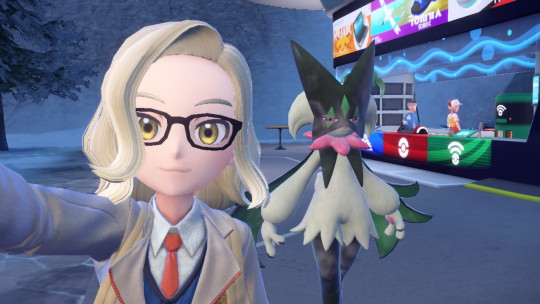

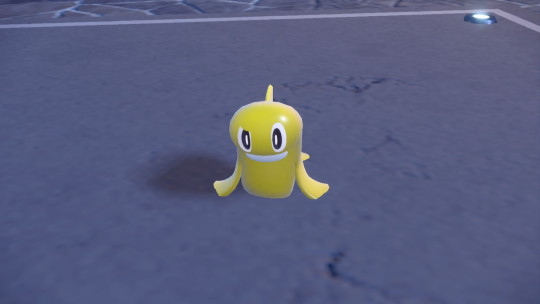
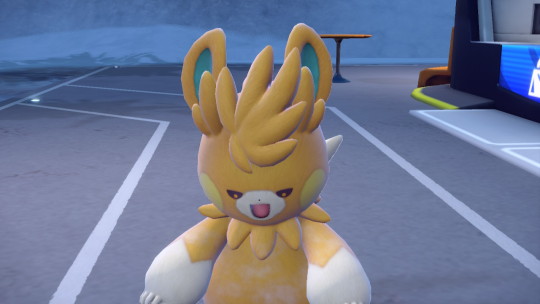


So, took some time, but I think I got my team finalized:
Gramarye the Meowscarada (♂)
Samus the Armarouge (♀)
Geshi the Tatsugiri (♂)
Defibriliera the Pawmot (♀)
Handwerkmine the Garganacl (♀)
Glod the Gholdengo
I initially wasn't sure what to pick for my water type, since I had already decided on Meowscarada, Pawmot and Garganacl and didn't want any more physical attackers, so Tatsugiri was the only thing that really came into question. And for the final slot in my party I also wanted a special attacker, but initially couldn't decide between Kilowattrel (which I actually used for a while) and Glimmora. . . before I realized that Gholdengo was also an option and fit perfectly with its typing.
16 notes
·
View notes
Text

Parasite Dolls
129 notes
·
View notes
Text
Name: Wojtek
Original Historical Figure: General Wojtek
Age: 16
2003 or 2023?: 2023
Sexuality: I mean. He's a bear. Do bears have sexualities? Not that kind of bear lmao
Other info:
OK so basically. When looking for figures to make in the second batch, the Secret Board of Shadowy Figures saw something about a General Wojtek and didn't really do much research beyond that point before they got his DNA
Turns out it was a bear
But they were like "hey if we can train and domesticate this bear and use it as a weapon that'd be great"
So they kept Wojtek and made him a student just like the human clones
He's sort of a mascot as well as a student
The 2003 clones are like WHAT THE FUCK and the 2023 ones are like "oh that's just Wojtek he's chill :)"
Topher is like "this is animal cruelty he should be set free"
Wojtek bites him
Just like the original Wojtek, he likes swallowing lit cigarettes
They dress him up for Snowflake Day 🥺
May or may not have mauled a few GESH people but is friends with Geshy
I can't draw and I can't really make a Sim of him so here's some pictures of the irl Wojtek being cute



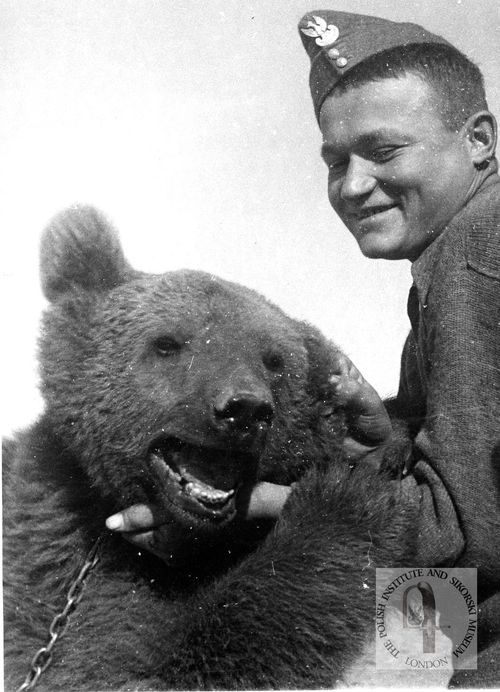
6 notes
·
View notes
